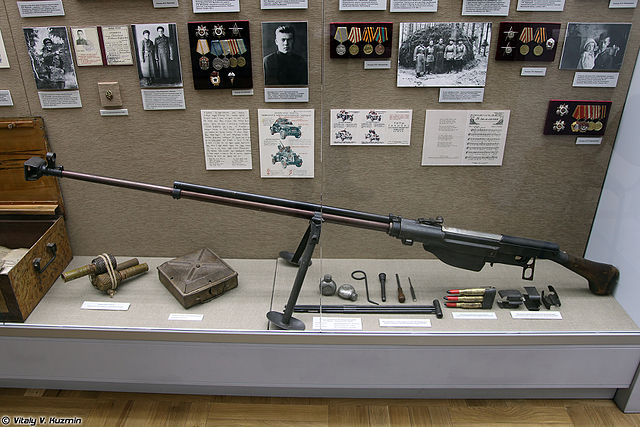Man-portable anti-tank systems
Man-portable anti-tank systems are traditionally portable shoulder-launched projectile systems firing heavy shell-type projectiles, typically designed to combat protected targets, such as armoured vehicles, field fortifications and at times even low-flying aircraft.
Mauser 1918 T-Gewehr 13.2x92mm anti-tank rifle at the Musée de l'Armée in Paris.
RPG-7 rocket launcher with shaped charge rocket.
A recoilless rifle, such as this Carl Gustav recoilless rifle, produces a large backblast when fired
Baktar-Shikan Man portable Anti tank Guided Weapon
An anti-tank rifle is an anti-materiel rifle designed to penetrate the armor of armored fighting vehicles, most commonly tanks, armored personnel carriers, and infantry fighting vehicles. The term is usually used for weapons that can be carried and used by one person, but is sometimes used for larger weapons. The usefulness of rifles for this purpose ran from the introduction of tanks in World War I until the Korean War. While medium and heavy tank armor became too thick to be penetrated by rigid projectiles from rifles that could be carried by a single soldier, anti-tank rifles continued to be used against other "soft" targets, though recoilless rifles and rocket-propelled grenades such as the bazooka were also introduced for infantry close-layer defense against tanks.
Soviet PTRS anti-tank rifle in a museum
Mauser 1918 T-Gewehr 13.2 x 92 mm anti-tank rifle at the Musée de l'Armée in Paris.
Polish Kb ppanc wz.35 7.92 mm anti-tank rifle used by the Polish Army during the Invasion of Poland (September 1939).






